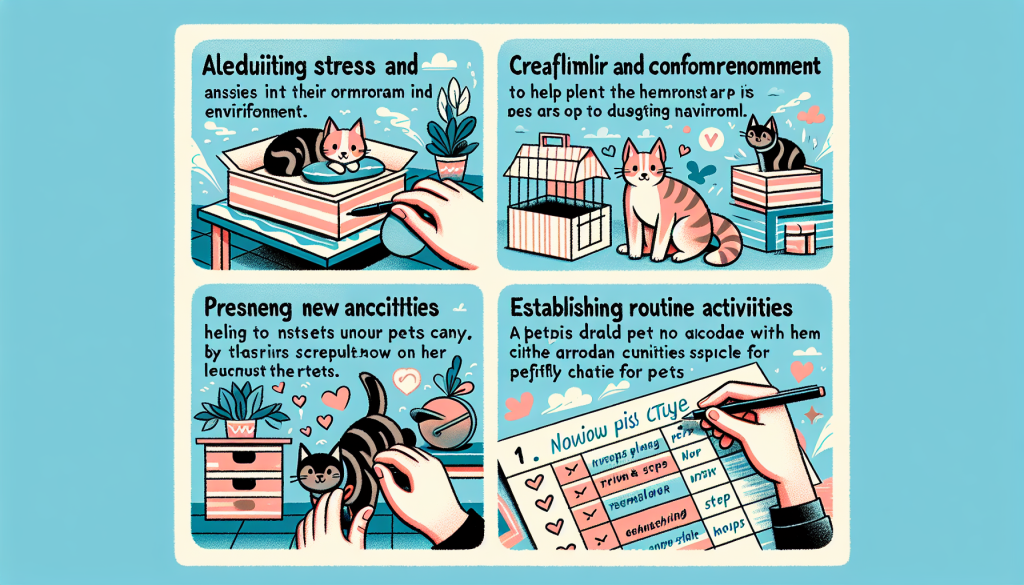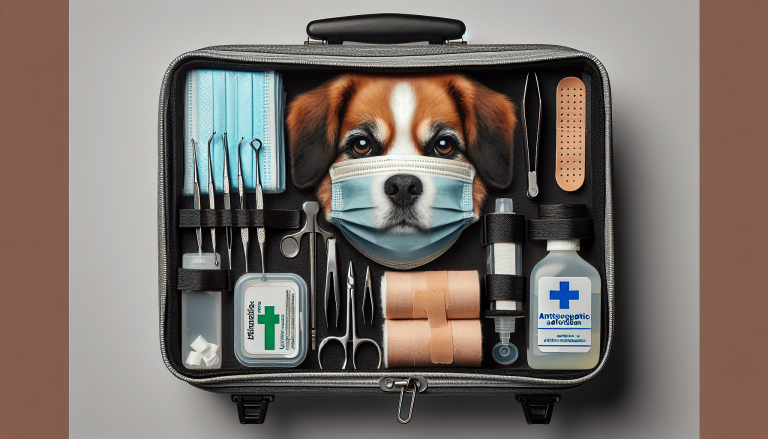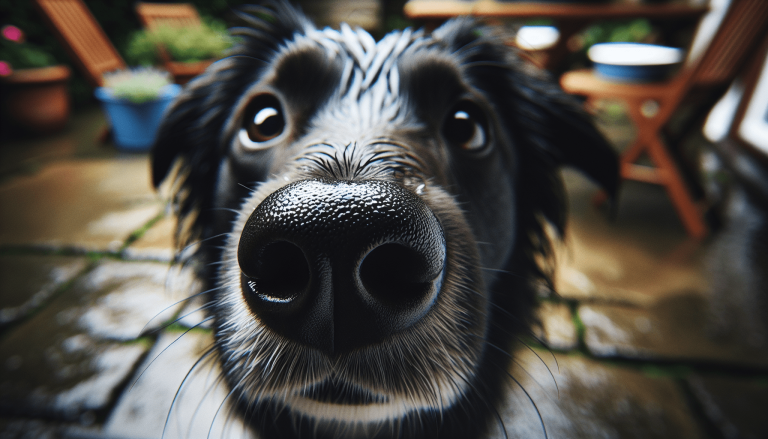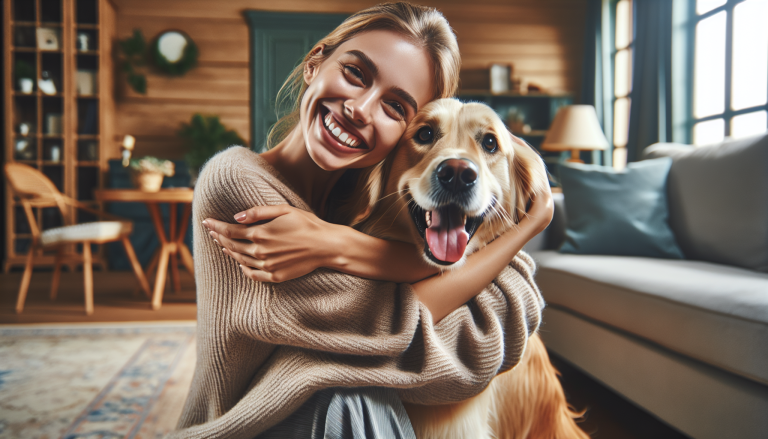Moving to a new home can be an exciting adventure, but it can also be a stressful time for your furry friend. In this article, we will explore the best ways to help your pet adjust to their new surroundings and make the transition as smooth as possible. From creating a comforting space to establishing routines, these simple tips and tricks will ensure that your pet feels loved, secure, and right at home in no time. So, grab a treat and get ready to embark on this journey with your beloved companion!
Table of Contents
TogglePreparing for the Move
Moving to a new home can be an exciting but also stressful time, not just for you but also for your furry friend. To ensure a smooth transition and help your pet adjust to their new surroundings, there are several steps you can take before and during the move.
Ensuring a Safe and Secure Environment
The safety of your pet should always be a priority, especially in a new and unfamiliar environment. Before the move, take the time to inspect your new home for any potential hazards. Make sure windows and doors are secure, fences are intact, and there are no toxic plants or substances that your pet could accidentally ingest. It’s also a good idea to check for any holes or gaps where your pet could escape or get stuck.
Keeping Familiar Items and Scents
During the move, keep your pet’s familiar items close by, such as their bed, toys, and blankets. These familiar scents will provide a sense of comfort and familiarity in the new home. If possible, try to set up their sleeping and feeding areas in a similar layout to what they were used to in the old home. This will help your pet feel more at ease and minimize any confusion or stress.
Maintaining Routine and Familiarity
Pets thrive on routine, so try to maintain their regular schedule as much as possible. Stick to their usual feeding times, exercise routines, and playtime activities. Keeping their routine consistent will provide a sense of stability and familiarity, helping them adjust more easily to the new surroundings. Additionally, try to avoid any major changes or disruptions in their routine during the moving process to minimize stress.
Introducing Your Pet to the New Home
The first few days in a new home can be overwhelming for your pet. By taking a gradual approach and creating a comfortable space, you can help them feel more at ease.
Creating a Comfortable Space
Set up a designated area in your new home where your pet can feel safe and secure. This could be a quiet room with their bed, toys, and a familiar blanket. Make sure the space is free from any potential hazards and provide them with plenty of food, water, and litter boxes if needed. Gradually introduce your pet to the rest of the house once they’ve had time to adjust to their safe space.
Gradual Introduction to the New Environment
After your pet has settled into their designated area, slowly introduce them to the rest of the house. Start with one room at a time, allowing them to explore at their own pace. Supervise their exploration and provide positive reinforcement, such as treats and praise, when they show curiosity and confidence. If your pet seems anxious or overwhelmed, allow them to retreat to their safe space and try again later.
Monitoring and Supervising
During the initial days in the new home, it’s important to monitor your pet’s behavior closely. Look out for signs of stress or anxiety, such as excessive panting, pacing, or hiding. If you notice any concerning behaviors, provide reassurance and comfort without reinforcing their anxious behavior. Additionally, supervise your pet whenever they are exploring new areas to prevent accidents or unwanted behavior.
Establishing a Routine
Establishing a routine in the new home will provide a sense of stability and security for your pet. Here are some key aspects to consider when establishing a routine.
Consistent Feeding and Exercise Schedule
Maintaining a consistent feeding schedule will help your pet feel secure and ensure they receive proper nutrition. Stick to their usual feeding times and portion sizes. Additionally, establish a regular exercise routine that matches their energy levels and needs. This can include walks, playtime, or mental stimulation activities. A well-fed and exercised pet will be more content and less prone to anxiety or destructive behavior.
Regular Playtime and Interaction
Pets thrive on social interaction, so be sure to set aside dedicated time for play and interaction each day. This not only provides mental and physical stimulation but also strengthens the bond between you and your pet. Engage in activities that your pet enjoys, such as tug-of-war, fetch, or puzzle toys. Tailor the playtime to their individual preferences and offer positive reinforcement for good behavior.
Maintaining a Familiar Sleeping Area
Just like humans, pets find comfort in having a designated sleeping area. Whether it’s a cozy bed, a crate, or a designated spot on the floor, make sure your pet has a familiar and comfortable place to rest. Place their bed or sleeping area in a quiet location away from any disturbances. Having a consistent and familiar sleeping area will promote a sense of security and ease their transition into the new home.
Providing Emotional Support
Moving to a new home can be emotionally taxing for your pet. By providing reassurance, spending quality time, and encouraging positive associations, you can help alleviate their anxiety and support their emotional well-being.
Reassurance and Comfort
During the transition, your pet may experience fear or anxiety. Provide reassurance and comfort by using a calm and soothing voice. Offer physical contact through gentle petting or cuddling, if your pet enjoys it. Offering them a familiar toy or blanket can also provide comfort and a sense of security. Remember, consistent love and reassurance will help your pet feel safe and supported as they adjust to their new surroundings.
Spending Quality Time and Bonding
Take the time to bond with your pet in the new home. Engage in activities that they enjoy, such as grooming, training, or simply relaxing together. Quality time spent with your pet will strengthen your bond and build trust, helping them feel more comfortable and secure. Make sure to provide undivided attention during these bonding moments, free from distractions or disruptions.
Encouraging Positive Associations
To help your pet associate their new home with positive experiences, consider using treats and rewards. For example, whenever your pet explores a new area or exhibits calm behavior, offer them a small treat or verbal praise. This positive reinforcement will create positive associations with the new home and reinforce desired behavior. Over time, your pet will come to see the new home as a place of comfort and happiness.
Socializing and Meeting New People/Animals
Introducing your pet to new people and animals in a controlled and gradual manner is crucial for their socialization and overall well-being.
Gradual Introduction to New Friends
When introducing your pet to new friends, whether they are human or animal, take it slow. Start with brief and supervised interactions, gradually increasing the length and frequency as your pet becomes more comfortable. Allow your pet to approach and initiate interaction at their own pace. Provide positive reinforcement and rewards for calm and friendly behavior during these introductions.
Positive Reinforcement and Rewarding Good Behavior
It’s important to reinforce positive behavior and provide rewards when your pet interacts well with new friends. Whether it’s offering treats, words of praise, or their favorite toy, positive reinforcement helps your pet associate new social experiences with positive outcomes. This will not only make your pet more comfortable but also encourage them to be more confident and sociable in the long run.
Professional Help if Needed
If your pet shows signs of fear, aggression, or extreme anxiety when socializing, it may be beneficial to seek professional help. A qualified animal behaviorist or trainer can provide guidance and create a customized plan to address your pet’s specific needs. They can offer valuable insights and techniques to help your pet overcome any socialization challenges they may face in the new home.
Monitoring Health and Well-being
During the transition period, it’s essential to closely monitor your pet’s health and well-being. Here are some key areas to focus on:
Regular Check-ups with a Veterinarian
Schedule a visit to the veterinarian shortly after the move to ensure your pet is healthy and up to date on vaccinations. This is especially important if you have moved to a new area where there may be different health risks or environmental factors to consider. Regular check-ups will help identify any potential health issues early on and ensure your pet receives the necessary care.
Observing Eating and Bathroom Habits
Keep an eye on your pet’s eating and bathroom habits during the transition. Any changes in appetite, frequency of urination or defecation, or appearance of their stool should be noted. Stress and anxiety can affect these routines, so it’s important to provide a calm and stable environment to help your pet establish their normal patterns. If you notice any significant changes or concerns, consult your veterinarian for guidance.
Addressing Any Change in Behavior
Moving to a new home can sometimes trigger changes in your pet’s behavior. Watch for signs of anxiety, aggression, depression, or any other abnormal behavior. Changes in behavior could be indicators of stress or discomfort. Address any concerns promptly by seeking professional advice or consulting with your veterinarian. Early intervention can help prevent any behavioral issues from escalating and ensure your pet’s overall well-being.
Dealing with Anxiety and Stress
Anxiety and stress are common for pets during a move. Here are some methods to help alleviate their anxiety and create a calm atmosphere.
Providing a Calm and Quiet Space
Designate a quiet area in your new home where your pet can retreat to when they need a break from the commotion. This can be a separate room, a cozy corner, or a crate where they feel safe and secure. Create a calm environment in this space by minimizing noise, providing comfy bedding, and offering familiar items. Encourage your pet to spend time in this calming space whenever they feel overwhelmed.
Using Natural Remedies or Supplements
If your pet experiences moderate to severe anxiety, natural remedies or supplements may provide additional support. Consult with your veterinarian about options such as pheromone diffusers, herbal remedies, or anxiety-reducing supplements. These can help soothe your pet’s nerves and promote relaxation without any harsh side effects. It’s important to discuss these options with a professional to ensure their safety and effectiveness.
Seeking Professional Advice if Necessary
In severe cases of anxiety or prolonged distress, it may be necessary to seek professional help. A veterinarian or animal behaviorist can assess your pet’s situation and recommend appropriate interventions or medications. They can provide personalized strategies to alleviate your pet’s anxiety and ensure their emotional well-being. Remember, seeking professional advice is a proactive approach to supporting your pet’s mental health during this adjustment period.
Helping Your Pet Adapt to the Surroundings
The new home may feel unfamiliar and intimidating to your pet at first, but with time and patience, they can adapt to their new surroundings.
Exploring the New Home together
Take your pet on guided tours of the new home, allowing them to explore at their own pace. Accompany them as they sniff around, investigate new areas, and get acclimated to the different sights, sounds, and smells. Offer encouragement and reassurance as they familiarize themselves with their new environment. Through guided exploration, your pet will gradually become more comfortable and confident in their new home.
Familiarizing with the Neighborhood
In addition to exploring the house, introduce your pet to the neighborhood. Take them on short walks around the area, allowing them to sniff and become familiar with their new surroundings. This will help your pet establish a sense of belonging and familiarity with the neighborhood. Additionally, ensure your pet is properly identified with current contact information, in case they accidentally wander off during these initial outings.
Creating a Sense of Security
To help your pet feel secure in the new home, it’s important to establish a consistent routine and provide stability. Stick to their regular feeding and exercise schedule, and create a predictable environment by maintaining a calm and organized household. Consistency and predictability will reassure your pet that their needs will be met and that their environment is stable and secure.
Unpacking and Organizing with Care
As you unpack and organize your new home, keep your pet’s well-being in mind. Here are some tips to ensure their safety during this process.
Gradual Unpacking in Stages
Unpacking and organizing can be overwhelming for both you and your pet. To minimize stress, consider unpacking and arranging your belongings in stages. Start with the essential items your pet needs, such as their food and water bowls, bed, and toys. As they settle into the new home, gradually unpack other items. This gradual approach will give your pet time to acclimate to each new addition without feeling overwhelmed by the sudden changes.
Maintaining a Calm Environment during Organization
The process of unpacking and organizing can create chaos and disrupt the sense of calm in the new home. While it’s necessary to complete these tasks, try to keep the environment as calm and routine-oriented as possible. Avoid loud noises, excessive movements, or major rearrangements while your pet is adjusting to their new surroundings. A calm environment will promote a sense of security and ease any potential anxiety during this time.
Preventing Potential Hazards
As you unpack, keep an eye out for any potential hazards that could pose a risk to your pet’s safety. Ensure all cleaning products, medications, and toxic substances are securely stored out of reach. Keep electrical cords tidy and inaccessible to prevent chewing or tripping hazards. Additionally, secure any loose items, such as heavy furniture or decorations, that could potentially cause harm to your pet. By taking these precautions, you can create a safe and pet-friendly living environment.
Patience and Understanding
Adjusting to a new home takes time, and each pet will have their own unique timeline for acclimation. Here are some key points to remember during this process:
Allowing Time for Adjustment
Be patient with your pet while they adjust to their new home. It’s natural for them to take some time to adapt to the unfamiliar environment. Avoid rushing the process or becoming frustrated if your pet seems hesitant or anxious. Instead, provide reassurance, support, and a calm environment. With time and patience, your pet will gradually settle into their new surroundings.
Understanding Individual Needs and Personality
Every pet has their own individual needs and personality traits that may influence their adjustment process. Some pets may be more outgoing and adapt quickly, while others might be more cautious and require more time to feel comfortable. Tailor your approach based on your pet’s individual needs and preferences. By understanding and accommodating their unique personality, you can provide the necessary support for a successful transition.
Celebrating Milestones of Progress
Throughout the adjustment period, celebrate and recognize your pet’s milestones of progress. Whether it’s successfully exploring a new area of the home, interacting positively with a new friend, or displaying signs of increased confidence, acknowledge and reward these achievements. Celebrating milestones will reinforce positive behavior and build their confidence, making the transition to the new home a positive experience for both you and your pet.
In conclusion, helping your pet adjust to a new home requires careful preparation, patience, and understanding. By creating a safe and secure environment, providing comfort and routine, and offering emotional support, you can help your pet transition smoothly to their new surroundings. Remember to monitor their health and well-being, gradually introduce them to new people and animals, and maintain a calm and organized environment during the unpacking process. With time, patience, and love, your pet will soon find comfort and happiness in their new home.








